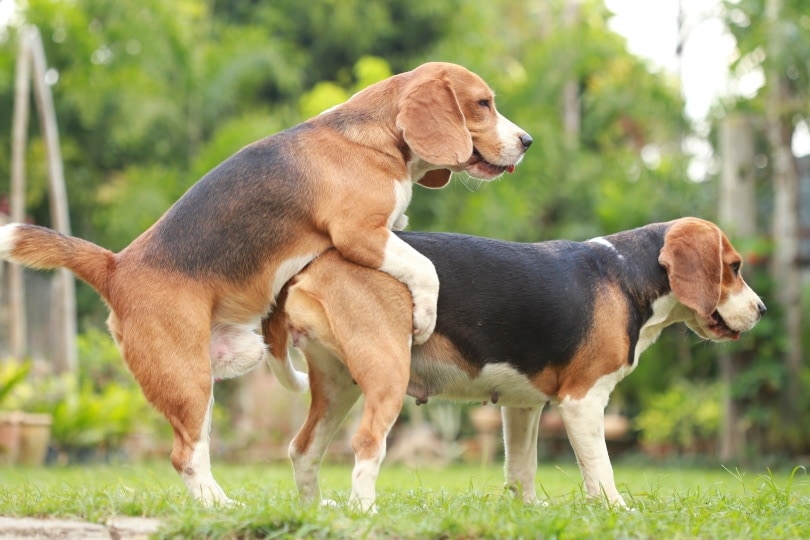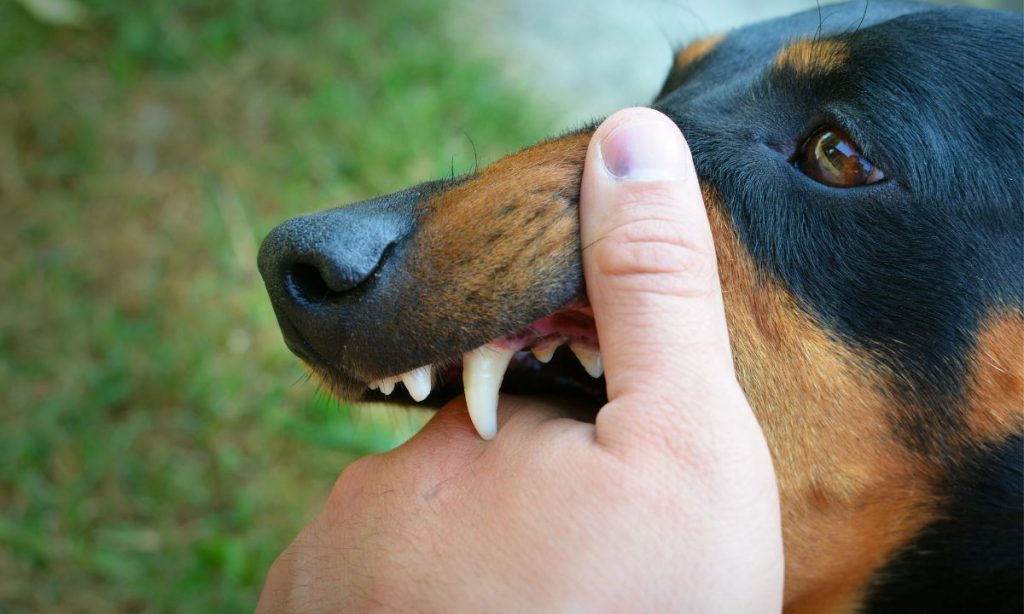Last Updated on April 12, 2024 by Dog Lover
Why Do Female Dogs Cry During Mating? Decoding the Whimpers and Whines
Have you ever witnessed your furry friend or a neighbor’s dog cry out during mating? If so, you’re not alone.
This canine behavior can be quite perplexing for pet owners, leaving them wondering if their dog is in pain, scared, or simply expressing something else entirely.
Fear not, pawsome pet parents! We’re here to shed light on this woof-worthy mystery.
In this comprehensive guide, we’ll delve into the reasons behind a female dog’s vocalizations during mating, explore the various meanings behind their cries, and answer all your burning questions to ensure a pawsitive mating experience for your pup.
Hold on, though! Before we dive into the juicy details, let’s establish some ground rules.
- This article is for informational purposes only. We strongly recommend consulting your veterinarian before breeding your dog. They can assess your dog’s overall health, suitability for breeding, and advise on responsible breeding practices.
- The focus here is on natural canine behavior. Unethical breeding practices or underlying medical conditions can cause distress in dogs during mating. If you suspect your dog is in pain or discomfort, seek immediate veterinary attention.
Now that we’re on the same page, let’s unleash the secrets behind those doggy cries!
Decoding the Cries: A Symphony of Emotions
A female dog’s vocalizations during mating can be a real mixed bag. Whimpers, whines, yelps, and even growls might erupt from our furry friends, leaving us scratching our heads.
But fret not, these vocalizations are a form of communication, and understanding the context is key.
Here’s a breakdown of the possible reasons behind their cries:
- Mating Call: Believe it or not, those cries could be a canine come-hither! During their heat cycle, female dogs release pheromones that attract males. Their vocalizations can further amplify this message, acting as a natural mating call to alert potential suitors.
- Discomfort: The mating process itself can be physically demanding for a female dog. The initial mounting and positioning might cause some temporary discomfort, leading to whimpers or yelps.
- Stress or Anxiety: An unfamiliar environment, the presence of a new dog, or even the intensity of the mating act can trigger anxiety in some female dogs. This anxiety can manifest as vocalizations.
- Pain: While uncommon, underlying medical conditions or improper breeding techniques could cause genuine pain during mating. If your dog exhibits signs of extreme distress, yelping, or struggles excessively, consult your vet immediately.

She’s Crying, But Is She Happy? Untangling the Emotional Rollercoaster
So, how do you decipher if your dog’s cries signify a happy, receptive experience or signal distress? Here are some clues to watch out for:
- Body Language: A relaxed body posture, a wagging tail, and receptive mounting are all positive signs. Conversely, a tense body, tucked tail, or attempts to escape indicate discomfort or stress.
- Vocalizations: High-pitched yelps or growls are usually red flags. Whines or whimpers might be normal, but observe her overall demeanor.
- Facial Expressions: Relaxed facial features and a soft gaze suggest a positive experience. Wrinkled noses, bared teeth, or averted eyes could indicate anxiety.
Remember, every dog is an individual. Pay close attention to your furry friend’s unique cues to understand her emotional state during mating.

Creating a Calm and Comfortable Environment
Here are some tips to ensure a positive mating experience for your dog:
- Neutral Territory: Mating on neutral ground can minimize territorial behavior and anxiety for both dogs.
- Supervision: Always supervise the mating process to ensure safety and intervene if necessary.
- Familiar Faces: Having a trusted person present can provide comfort and reduce stress for your dog.
- Veterinary Checkup: A pre-breeding vet visit ensures both dogs are healthy and suitable for mating.
By creating a calm and comfortable environment, you can minimize the chances of distressful vocalizations during mating.
Stay tuned! We’ll explore more canine mating mysteries in the following sections, including responsible breeding practices, signs of a successful mating, and essential post-mating care for your furry friend.
Coming up next: Responsible Breeding Practices 101!
Disclaimer: This article is for informational purposes only and should not be taken as veterinary advice. Please consult with your veterinarian for guidance on breeding your dog.

Responsible Breeding Practices 101: Ensuring a Healthy and Ethical Experience
Breeding dogs is a significant responsibility. Beyond the adorable puppies, it requires careful planning, prioritizing the health and well-being of both parents and offspring.
Here are some essential guidelines for responsible breeding:
- Prioritize Health: Both the male and female dog should undergo a thorough veterinary checkup before breeding. This ensures they are free from genetic diseases, sexually transmitted infections, and any underlying health conditions that could be passed on to puppies.
- Age Matters: Female dogs should be at least 2 years old and ideally within their prime breeding years (typically 2-5 years old) to ensure a safe and healthy pregnancy. Males can start breeding a bit younger, around 1.5 years old.
- Temperament Counts: Breeding dogs with good temperaments is crucial. Aggressive or anxious behaviors can be hereditary and impact the future well-being of the puppies.
- Finding the Right Match: Matching your dog with a compatible partner of the same breed is essential. Consider factors like pedigree, health history, and temperament when selecting a breeding partner. Consult with reputable breeders or breed associations for guidance.
- Commitment to Care: Breeding is a long-term commitment. Be prepared to provide proper prenatal care for the mother, whelping assistance during birth, and responsible care for the puppies until they find loving forever homes.

Signs of a Successful Mating
After a successful mating, there might not be any immediate signs. However, some subtle changes in your dog’s behavior might indicate conception:
- Behavioral Shifts: Increased nesting behavior, lethargy, and reduced interest in food can occur in the weeks following mating.
- Physical Changes: Slight weight gain and mammary gland development might become noticeable around 4-6 weeks after mating.
- Confirmation with a Vet: A veterinarian can confirm pregnancy through a blood test or ultrasound around 30 days after mating.

Post-Mating Care: Nurturing Your Pregnant Pup
Once pregnancy is confirmed, it’s time to focus on providing your dog with optimal care:
- Nutritional Support: Switch your dog to a high-quality puppy food formulated for pregnant mothers. This will ensure she receives the essential nutrients for her growing puppies.
- Gentle Exercise: Moderate exercise is beneficial throughout pregnancy. However, avoid strenuous activity or jumping as it could be risky.
- Prepare a Whelping Box: Create a comfortable and safe space for your dog to give birth and raise her puppies. Line the box with soft bedding and place it in a quiet location.
- Veterinary Visits: Schedule regular checkups with your veterinarian throughout pregnancy to monitor your dog’s health and the puppies’ development.

Beyond the Whimpers: Other Canine Mating Mysteries
- The Tie: During mating, a natural phenomenon called a copulatory tie can occur. This is where the male and female dogs remain physically connected for a short period (usually 15-20 minutes). There’s no need to intervene; it’s a normal part of the mating process.
- Multiple Matings: For optimal chances of conception, some breeders allow for multiple matings over a few days during the female’s fertile window.
- False Pregnancies: Sometimes, a female dog might exhibit pregnancy symptoms even if she’s not actually pregnant. This is known as a pseudopregnancy and can be caused by hormonal fluctuations. Consult your vet if you suspect a false pregnancy.
FAQs: Your Canine Mating Questions Answered
Is it okay for my dog to cry during mating?
Crying can be a normal response for some dogs during mating. However, it’s crucial to observe their body language and overall demeanor. If they exhibit signs of extreme distress, pain, or attempt to escape, consult your vet immediately.
How can I prevent my dog from crying during mating?
Creating a calm and comfortable environment, ensuring a good match with the breeding partner, and minimizing stress factors can help. However, some vocalizations might be unavoidable.
Should I intervene if my dog cries during mating?
Generally, no. The copulatory tie is a natural process, and separating the dogs during this time could cause injury. However, if your dog exhibits severe distress, consult with the breeder or veterinarian present for guidance.
What are some signs that mating wasn’t successful?
The absence of pregnancy symptoms like mammary gland development or weight gain within a reasonable timeframe (around 4-6 weeks) might indicate an unsuccessful mating. A veterinarian can confirm pregnancy through tests.
Where to Find More Information
Responsible breeding practices require continuous learning and staying updated on best practices. Here are some resources to delve deeper into canine reproduction and breeding:
- American Kennel Club (AKC): The AKC website offers a wealth of information on responsible breeding practices, breed standards, and finding reputable breeders https://www.akc.org/breeder-programs/breeder-education/akcs-guide-responsible-dog-breeding/.
- National Association of Professional Breeders (NAPB): The NAPB website provides resources on ethical breeding, breeder education, and finding NAPB member breeders https://www.plantbreeding.org/.
- Canine.org: This website offers informative articles on various aspects of dog breeding, including health testing, whelping, and puppy care https://canine.org/get-involved/ways-to-volunteer/become-a-volunteer-breeder-caretaker/.
Conclusion
Understanding your dog’s vocalizations during mating can be a valuable tool in ensuring a positive experience for your furry friend.
By prioritizing responsible breeding practices, creating a calm environment, and providing proper care throughout pregnancy, you can contribute to the well-being of both the mother dog and her adorable offspring.
Remember, happy breeding starts with responsible pet ownership!

















